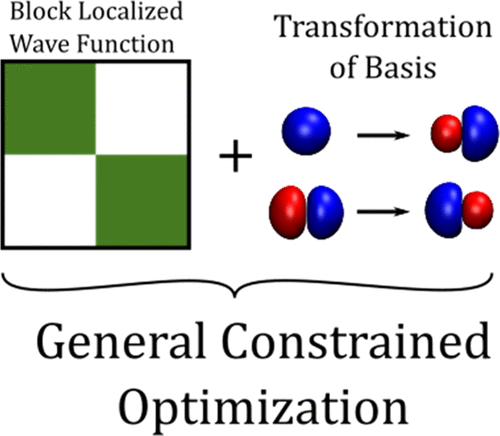Grofe, A.; Zhao, R.; Wildman, A.; Stetina, T. F.; Li, X.; Bao, P.; Gao, J.. Journal of Chemical Theory and Computation, 2021, 17, 277−289.
The block-localized wave function method is useful to provide insights on chemical bonding and intermolecular interactions through energy decomposition analysis. The method relies on block localization of molecular orbitals (MOs) by constraining the orbitals to basis functions within given blocks. Here, a generalized block-localized orbital (GBLO) method is described to allow both physically localized and delocalized MOs to be constrained in orbital-block definitions. Consequently, GBLO optimization can be conveniently tailored by imposing specific constraints. The GBLO method is illustrated by three examples: (1) constrained polarization response orbitals through dipole and quadrupole perturbation in a water dimer complex, (2) the ground and first excited-state potential energy curves of ethene about its C–C bond rotation, and (3) excitation energies of double electron excited states. Multistate density functional theory is used to determine the energies of the adiabatic ground and excited states using a minimal active space (MAS) comprising specifically charge-constrained and excited determinant configurations that are variationally optimized by the GBLO method. We find that the GBLO expansion that includes delocalized MOs in configurational blocks significantly reduces computational errors in comparison with physical block localization, and the computed ground- and excited-state energies are in good accordance with experiments and results obtained from multireference configuration interaction calculations.

